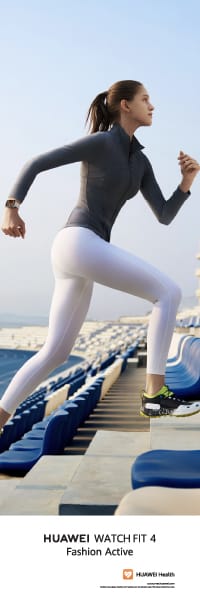Just a few dark and cold weeks back it seemed like spring would never come, but it has arrived, and with it comes the start of the new running season. It’s time to take it up a gear, get the legs moving faster and build up to a few PB’s. – BY RAY ORCHISON
Once you’ve built your strength base, you can begin to turn your diesel engine into a petrol engine by gradually including speed work in your training. Now I’m sure you’ve heard coaches and other runners throw around the phrase, “to get faster, you need to run faster.” While this is very true, we often misinterpret exactly what this means – and end up running too fast, too often.
So what does it mean then? Well, slower, easier runs are a very important part of any training programme. They serve many purposes, such as helping us recover and develop our all-important aerobic engine. The bigger and stronger the engine the better we are able to rev it and floor it without blowing it up. Running faster therefore does not mean taking out the slower runs, or increasing the pace of them. Running faster means that you begin to incorporate different and faster quality sessions between your easy runs.
What it’s Not
Now that we have an idea of what getting faster by running faster means, let’s have a look at what it does not mean. For some reason, most of us have this perception that running fast or speed work means hitting the track and running as fast as you can, as many times as you can. The problem with this approach is that it usually only lasts half a session before you find yourself limping off the track and into the physio’s rooms, because you’ve torn a calf or hamstring.
Speed work is not simply an all-out effort. It is not a shotgun approach where you throw everything at your session, or yourself, and hope that something sticks. Speed work is a bit like dating: You don’t go on the first date and behave as if it’s your hundredth date. You start slowly. You talk about the weather, you ask about each other’s careers and interests and then gradually over time, as you get to know each other, you get more and more serious.
Easy Does It
When introducing speed work into your training it must be introduced gradually. This means that you start with short sessions at a pace only slightly faster than your current easy run pace. Keep in mind that you are teaching your body how to run faster. You have to give your body time to learn how to recruit more muscle fibres. You have to allow the muscles time to get used to the new running biomechanics that come with running faster. Getting ahead of yourself will only leave you injured and frustrated.
And of course, age plays an important role. A teenager can pretty much jump out of bed and sprint down the passage to catch the next episode of Glee. When you’re a bit longer in the tooth, however, you’re going to have to roll out of bed, do a short dynamic warm-up and then walk down the passage, only to find you’ve missed the first five minutes of Dallas. The bottom line is that the younger you are, the quicker you are going to adapt to speed training, and of course, the older you are, the more patient you are going to have to be.
Start With a Hill
If you haven’t already been doing so, the best place to start speed work is on a hill, because hill training is a great introduction to track work, as it includes both strength and speed. But because you’re running uphill, you are not able to hurtle to the top at breakneck speed.
Start with a short, steep hill. It doesn’t have to be very long – somewhere between 60 to 100m is perfect. After a good warm-up of 15 to 20min of easy running, run up the hill four times at a fast pace with a walk or slow jog back to the bottom before hitting the next repeat. The pace up the hill must feel hard but be run at a pace that you feel you can maintain for all the repeats. After you’re done, cool down with a 15 to 20min easy jog. As this becomes easier, you can begin to increase the number of reps and the speed at which you do each repeat.
Start with a hill session once a week for three to four weeks, and if there are no issues or niggles, then add a second quality session to your week consisting of a number of short bursts of speed. Fartlek is perfect for this type of work. Fartlek is Swedish for “speed play.” In other words, have fun and mix it up a little. Here’s an example of a Fartlek session. Start with 15-20min easy jogging, then for the next 10min run repeats of 20sec fast followed by 40sec easy, then 40sec fast followed by 80sec easy. Finish off with a 15-20min easy jog to cool down.
Do the Basics Right
You’ll notice that in both the hill session and the Fatlek session, I have stipulated a warm-up and a cool-down. This is a very important part of any speed work session. A good warm-up prepares the body for the tougher work ahead, while a good cool-down assists with the removal of metabolic waste which builds up during high intensity work as well as speeding up recovery after a hard session.
Within six to eight weeks you’ll begin to notice significant improvements and you’ll find that you’re able to push a little faster in your coming races. Happy running and enjoy teaching the legs to tick over a little quicker.








.png)







